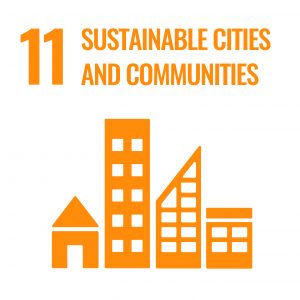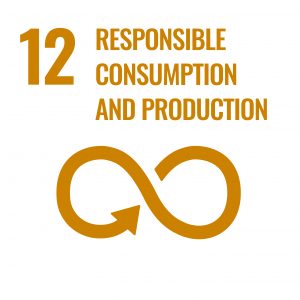Biodiversity ensures food variety and vital ecosystem balance allowing humanity to inhabit our lovely planet. However, reports suggest that the increasing loss of biodiversity put the future of livelihoods, environment, health, and food under serious threat.
Sustainable farming practices, like crop rotation and cover crops, can help counter this situation by restoring and preserving important habitats, improving water quality and soil health, and safeguarding watersheds. With the present global sustainable farming market size standing at 13.32 billion and estimated to reach 31.35 billion by 2031, this form of agriculture will likely continue contributing to Earth’s biodiversity loss, unless sustainable farming practices are adopted more widely. Let’s explore how:

Cover Crops Restore Soil Quality
Cover crops provide ground cover that prevents soil erosion and offers seeds for insects and birds during winters. They also increase nitrogen levels in the soil by fixing nitrogen from the air into organic elements that the plants can readily use as fertilizer. Planting different cover crops, like hairy vetch and rye, during the off-season increases organic matter in the soil, reduces erosion, and provides food for several advantageous insects, like bees, mantis, and ladybugs. Cover crops like brassicas and grasses provide shelter for different varieties of wildlife, including small mammals, like mice, voles, and rabbits.
Further, perennial cover crops, like alfalfa and buckwheat, cover the soil and maintain living roots throughout the year. They protect and promote soil health by replenishing essential soil nutrients, preventing erosion, reducing the need for herbicides and fertilizers, and keeping weeds in check. Farmers are also opting for sustainable farming methods and cultivating functional crops like soy to replenish the earth, and protect nature balance.
Crop Rotation Prevents Pest Resistance to Pesticides or Herbicides
Crop rotation is another sustainable farming method that prevents pest resistance to pesticides or herbicides, thus allowing farmers to grow different plants that provide habitat for several beneficial birds and insects. Crop diversity practices, like complex multiyear crop rotations and intercropping, help farmers plant different varieties of crops in a single farm, offering biodiversity benefits like:
- Growing more and different varieties of food in limited space.
- Avoiding soil depletion by rotating crops every year.
- Reducing the use of amendments, like manure and compost, every time a new crop is planted.
- Reducing losses from diseases and pests. For example, growing radishes below tomatoes protects them from fungal diseases, like Verticillium wilt, while planting onions above carrots protects them from carrot fly attacks.
Reduced Tillage Improves Soil Health
Conventional plowing or tillage prepares farmlands for proper agriculture and helps to prevent weed issues. However, it can cause soil loss by disturbing the soil structure and reducing organic matter, and even disrupt different soil organisms, like earthworms. Reduced till or no-till is a sustainable farming practice that involves leaving crop residues on the field surface or inserting seeds into undisturbed soil directly to prevent soil erosion and improve soil health. And when soil health improves, crop yields increase automatically, thus providing food for the beings, promoting biodiversity.

Rotational Grazing Promotes the Regeneration of Native Plants and Weeds
Rotational grazing involves rotating livestock through paddocks or pastures so each area can relax from grazing pressure before being grazed down again. This sustainable farming practice promotes biodiversity by allowing the regeneration of native plants and weeds after being grazed down. It also helps grasses grow taller, thus improving soil fertility and health by refining soil structure and increasing organic matter in the soil.
Further, animals deposit fecal matter or manure on land that offers required nutrients to plants while allowing carbon sequestration or seizing and storing atmospheric carbon dioxide, further reducing global climate change. Rotational grazing also helps keep paddocks and pastures healthy by reducing weed growth in bare spots where weeds thrive.
Integrated Pest Management Reduces Biodiversity Loss
IPM, or Integrated Pest Management, involves a range of procedures, including biological and mechanical controls applied systematically to limit pest population while minimizing the use of chemical pesticides. IPM reduces biodiversity loss by avoiding the contamination of surrounding water and soil resources through the controlled use of pesticides. It also safeguards beneficial insects acting as natural pest enemies, and other organisms, like non-target plants, fish, and birds, by minimizing the use of pesticides.
Smart Integration Makes Farms More Profitable and Efficient
Sustainable farming supports the smart integration of animal and crop production, making farms more profitable and efficient. This involves blending farm enterprises, like livestock, crop, poultry, aquaculture, agroforestry, and sericulture, to achieve sustained and economical agricultural production by efficiently using available resources.
Through smart integration, wastes generated from one farm component become an input for the other, thus promoting the efficient recycling of animal and farm wastes. This further results in crop diversification and intensification, increasing yield per hectare of land. Smart integration of crop and animal manufacture controls diseases, pests, and weeds through natural cropping system management and reduced use of toxic agrochemicals.

Land Conservation Maintains Biodiversity
Land conservation, another vital element of sustainable farming, improves and maintains biodiversity by safeguarding native plants, animals, and natural habitats from extinction or destruction. People who look for Oregon ranches for sale or areas of farmland in other areas will need to take care that they research the native plants and habitats before attempting land conservation. This allows them to grow the correct plants and encourage animals that are natural to the local ecosystem. It also improves soil quality by reducing erosion and promoting nutrient retention.
Further, sustainable farms treat less intensively cultivated or uncultivated areas as integral to the field. Natural agriculture alongside prairie plant strips or streams around or within crop fields can reduce nutrient runoff and soil erosion, support bees and other pollinators.
Conclusion
Using sustainable farming practices to keep agricultural soil protected and packed with beneficial living organisms can solve several issues related to biodiversity loss. While good quality living soil enhances the growth of healthy crops and prevents pollution, other sustainable farming practices like cover crops and crop rotation safeguard the health of animals and plants, thus benefiting biodiversity.
Photography by Annie Spratt




